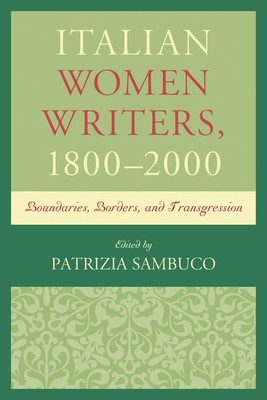
- We will send in 10–14 business days.
- Publisher: Fairleigh Dickinson University Press
- ISBN-10: 1611477921
- ISBN-13: 9781611477924
- Format: 15 x 22.9 x 1.3 cm, softcover
- Language: English
- SAVE -10% with code: EXTRA
Italian Women Writers, 1800-2000 (e-book) (used book) | bookbook.eu
Reviews
Description
Italian Women Writers, 1800-2000: Boundaries, Borders, and Transgression investigates narrative, autobiography, and poetry by Italian women writers from the nineteenth century to today, focusing on topics of spatial and cultural boundaries, border identities, and expressions of excluded identities. This book discusses works by known and less-known writers as well as by some new writers: Sibilla Aleramo, La Marchesa Colombi, Giuliana Morandini, Elsa Morante, Neera, Matilde Serao, Ribka Sibhatu, Patrizia Valduga, Annie Vivanti, Laila Waida, among others; writers who in their works have manifested transgression to confinement and entrapment, either social, cultural, or professional; or who have given significance to national and transnational borders, or have employed particular narrative strategies to give voice to what often exceeds expression. Through its contributions, the volume demonstrates how Italian women writers have negotiated material as well as social and cultural boundaries, and how their literary imagination has created dimensions of boundary-crossing.
EXTRA 10 % discount with code: EXTRA
The promotion ends in 20d.07:46:51
The discount code is valid when purchasing from 10 €. Discounts do not stack.
- Publisher: Fairleigh Dickinson University Press
- ISBN-10: 1611477921
- ISBN-13: 9781611477924
- Format: 15 x 22.9 x 1.3 cm, softcover
- Language: English English
Italian Women Writers, 1800-2000: Boundaries, Borders, and Transgression investigates narrative, autobiography, and poetry by Italian women writers from the nineteenth century to today, focusing on topics of spatial and cultural boundaries, border identities, and expressions of excluded identities. This book discusses works by known and less-known writers as well as by some new writers: Sibilla Aleramo, La Marchesa Colombi, Giuliana Morandini, Elsa Morante, Neera, Matilde Serao, Ribka Sibhatu, Patrizia Valduga, Annie Vivanti, Laila Waida, among others; writers who in their works have manifested transgression to confinement and entrapment, either social, cultural, or professional; or who have given significance to national and transnational borders, or have employed particular narrative strategies to give voice to what often exceeds expression. Through its contributions, the volume demonstrates how Italian women writers have negotiated material as well as social and cultural boundaries, and how their literary imagination has created dimensions of boundary-crossing.


Reviews